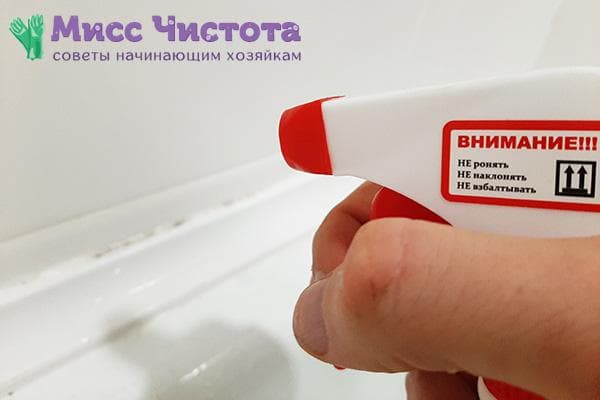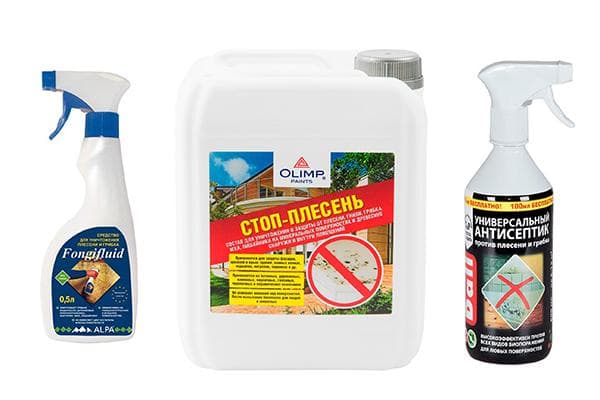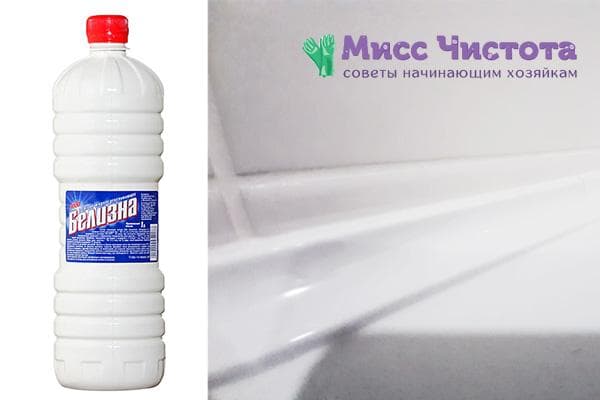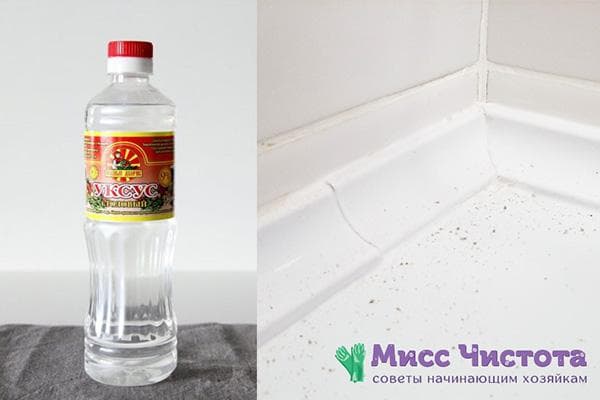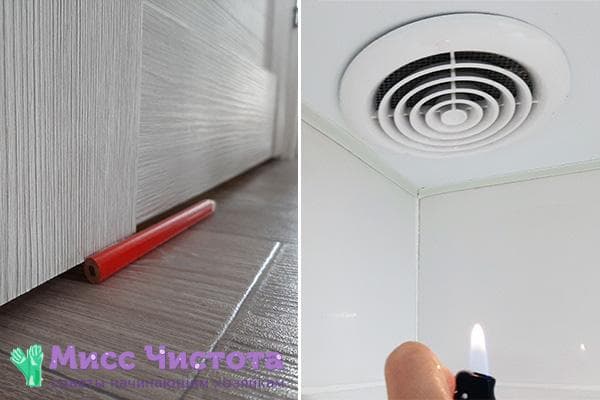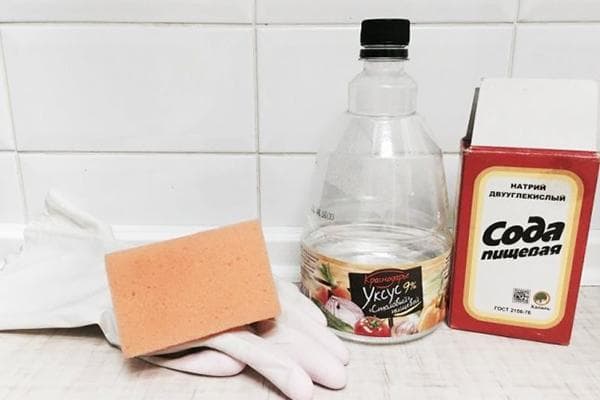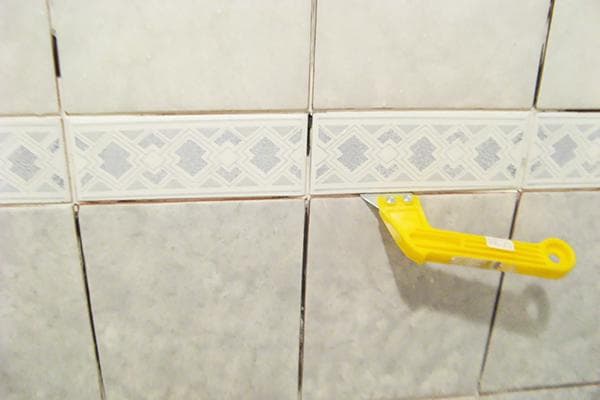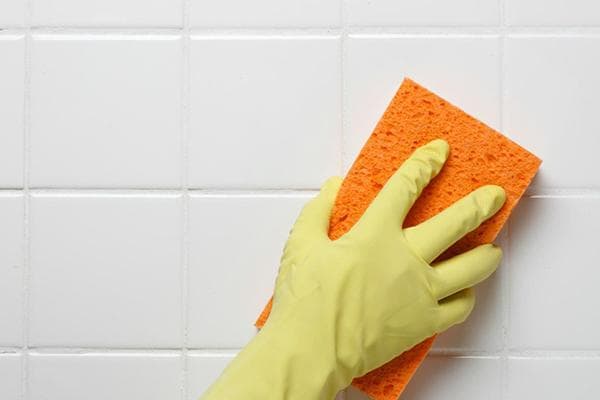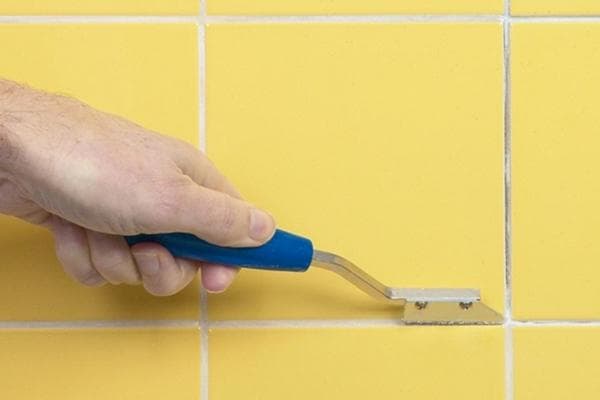How to remove mold in the bathroom once and for all?
A damp, dark bathroom is an ideal environment for fungus to grow. It is often very difficult to get rid of mold in the bathroom: conventional treatment products only destroy visible traces of its presence. Fungal spores are able to penetrate deep layers of materials, especially porous ones (plaster, putty, tile grout). Mold can appear again and again until you take thorough measures to eliminate it. We invite you to familiarize yourself with effective means for removing fungus in the bathroom.
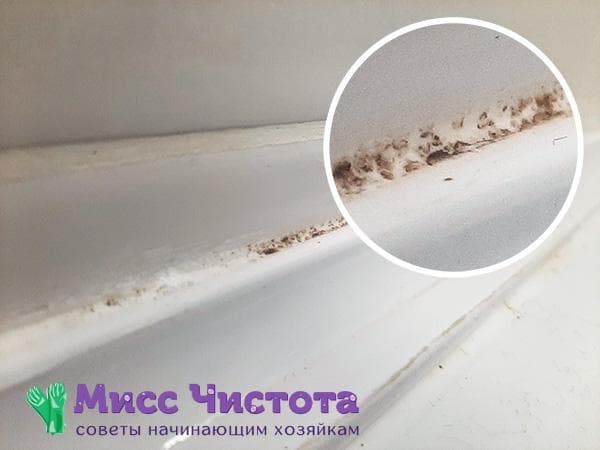
The best remedy for mold in the bathroom
The surest way to never encounter fungus is to regulate ventilation and heating in the bathroom, and also eliminate leaking taps. In other words, the best cure for mold is prevention. Including after cleaning existing stains. The fact is that fungal spores survive well in a humid environment without light or air movement. They are suitable for a slightly alkaline and neutral environment and are not afraid of most detergents, as well as temperatures up to 100 degrees, frost and cold.
Short of prevention, the best way to combat mold is chemical treatment. Fungal spores are very sensitive to acids, concentrated alkalis, biocides and fungicides that are used in industrial preparations. They are easily removed from the surface with vinegar, soda, and chlorine.However, the main problem is removing fungus from the inner layers of the walls. Folk remedies do not have high penetrating ability. Therefore, if the mold damage is serious, you should give preference to special antiseptics that destroy mold both outside and inside the walls, and also prevent its re-production.
The spores of the fungus Aspergillus fumigatus (Aspergillus fumigatus) are recognized as the most dangerous for humans. This is not black or yellow mold, as many people think. Fungal infection can have any color: bluish, greenish, gray. The shade only means that the mushroom has spores.
Household chemicals
Most modern wall treatments, including adhesives, paints and sealants, contain fungicides that inhibit the growth of fungi.
Conventionally, mold repellents can be divided into two groups:
- primers for prevention;
- concentrated formulations to combat mold.
If the fungus has already appeared, the use of prophylactic agents will not be enough. To clean the bathroom, you should use deep penetration concentrates. For the treatment of residential premises, latex emulsions are used, which do not contain heavy metal salts. They allow air to pass through and do not disturb the microclimate in the room.
3 best mold repellents:
- DALI Universal antiseptic. A highly effective drug that copes with all types of fungi, moss, algae, bacteria and other types of biological damage. Does not contain chlorine and does not destroy building materials. Suitable for treating various surfaces: concrete, brick, plaster, etc. To remove mold, an antiseptic is applied to the walls at the rate of 50–250 ml per 1 sq. m. m.Treatment is carried out twice with an interval of 6 hours. The price of a 0.6 l bottle is 150 rubles.
- ALPA fongifluid. An active fungicide that destroys fungal spores. They can be used to treat walls both inside and outside the house. During processing, the color and shine of the tiles are preserved, the composition is safe for paint and varnish coatings. A 2 liter bottle costs 550 rubles. Recommended consumption is 1 liter per 4–5 sq. m.
- OLIMP Stop mold. The anti-fungal preparation is intended for treating damp rooms: bathrooms, basements, greenhouses and others. Safe for people and animals, does not contain chlorine and volatile toxic substances. The product can be used to treat concrete, plaster, tiles, drywall, wood and many other materials. Approximate price – 100 rubles. for 1 l.
Folk recipes
If the mold damage is superficial, you can easily get by with home remedies.
The following recipes will help remove the fungus:
- Chlorine bleach. “Belizna”, “Domestos” and other similar products contain sodium hypochlorite, which has a detrimental effect on fungal spores. Bleach is diluted 1:1 with water and the affected areas are treated with a brush or sprayed from a spray bottle. Then the bleach is washed off: for superficial damage - after 10 minutes, for deep damage - after 3-4 hours.
- Vinegar 9%. Acetic acid quickly and effectively destroys mold on smooth surfaces. It is applied to walls, tiles, pipes and bathtubs without dilution. After an hour, the vinegar is washed off and the room is ventilated.
- Baking soda is an alkali and an abrasive. Helps mechanically clean out fungus. To do this, add 1 tbsp to a glass of soda. spoon of water and 1 tbsp. a spoonful of dishwashing detergent. The resulting paste is rubbed onto the areas affected by the fungus. After 30–40 minutes, the powder is washed off.
- Copper sulfate. You can fight mold in the bathroom with copper sulfate. This budget remedy is often used in gardening against fungus on plants. To treat the walls in the bathroom, use a solution of 30 g of powder and 1 liter of warm water. They can also remove stains on walls and ceilings after flooding.
- Potassium permanganate (potassium permanganate). A well-known antiseptic that is also effective against fungal spores. To treat walls, ceilings and spaces between tiles, prepare a solution of 1 teaspoon of potassium permanganate and 1 liter of water. Shake the liquid thoroughly. When all the grains of potassium permanganate have dissolved, moisten the affected areas generously with the solution and leave for 4–5 hours. Then the potassium permanganate is washed off.
4 steps to freedom from mold
Fighting fungus at home is not as difficult as it seems at first glance. The main thing is to approach the solution of the problem in detail. Relying on a miracle cure alone is wrong.
In order for mold to disappear without a trace and forever, you should follow 4 steps in sequence:
- We identify and eliminate the cause of mold in the bathroom. First, you need to adjust the ventilation and humidity in the bathroom. Check the ventilation openings and install a fan if necessary. Additional heating and installing a heated towel rail will help remove dampness. It is also important to inspect pipes and taps for leaks and repair them if necessary. Only after this the fight against the fungus will be as effective as possible.
- We remove the fungus from the surface. At this stage, you need to examine the entire bathroom. Mold can be present not only on the tiles, but also under the bathtub, on the curtains, in the corners, and on the rims of the shower stall.You should wash the surfaces with any of the above products, soak the rug and curtain in vinegar, and then wash (or replace with new ones).
- We carry out deep processing (if necessary). After superficial cleaning, the extent of mold damage in the bathroom will be visible. If the blackness or yellowness remains, or there is a musty smell, then it is necessary to carry out deep processing - cleaning. To do this, remove the old sealant, cement between the tiles on the wall, and remove a layer of plaster to the entire depth of the lesion. The better you clean the room, the more realistic the final removal of the fungus. Next, the cleaned surfaces are treated with chemical compounds. It is better to use special products and apply them not once, but 2-3 with a short interval.
- We treat walls and tiles with protective agents. At the final stage, preventive medications are applied to the walls, tiles, seams, and ceilings: antifungal sealants, primers, grouts, epoxy resin, etc. You can use concentrated emulsions and the folk recipes described above. To prevent the recurrence of mold, they are diluted with water 1:2.
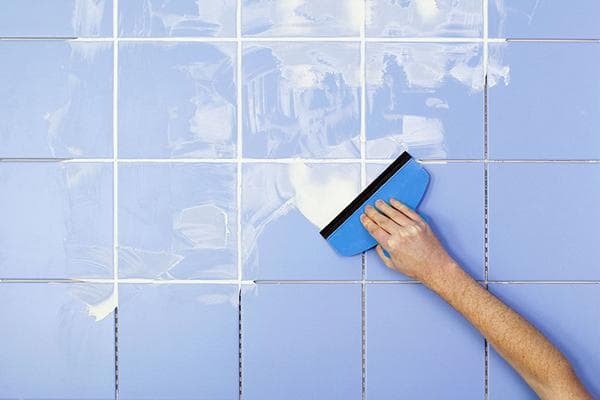
Most antifungal remedies, including home remedies, can burn the skin, mucous membranes and respiratory tract. To avoid poisoning or chemical burns, it is extremely important to take precautions. Carry out processing with the door open, wearing rubber gloves, protective clothing and a cotton-gauze bandage (respirator, if available).
How to get rid of fungus on tile joints - instructions
Very often mold appears in the bathroom at the seams of the tiles. It can attack cement and even silicone. Porous materials are fertile soil.Moisture accumulates in micropores, which feeds the fungus.
If you notice blackness between the tiles, you need to start processing immediately. Then there is a chance to get away with “little blood.”
How to remove mold between tiles on a wall yourself:
- Choose an antifungal agent.
- Finish the seams.
- Wait 3–6 hours.
- Rinse the tiles with warm water.
- Evaluate the effectiveness of the treatment.
- If mold or its smell remains, clean the seams to the depth of the damage.
- Apply a special anti-fungal product.
- Repeat the treatment 2-3 times.
- Seal the seams using epoxy resin, cement grout, or antifungal silicone caulk.
Practical advice
In theory, cleaning mold from tile joints should not raise any questions. But in practice, certain difficulties almost always arise.
To ensure antifungal treatment is quick and effective, consider the following tips:
- Apply the mildew remover between tiles, being careful not to get it on the tiles. Some compounds are aggressive, and the dyes on the tiles are not always of high quality.
- Use a thin brush or an old toothbrush to apply the antifungal agent. You can also cut a small piece of kitchen foam sponge. With these tools, you will not only be able to spot-treat the seams, but will also ensure good penetration of antifungal agents into all recesses and pits.
- Do not use a grinder to clean tile joints. You risk permanently damaging the tiles.
- To quickly clean the joints between the tiles, wet the cement generously with warm water 2-3 times at intervals of 10 minutes.
- Use a special seam scraper for cleaning.Its cost is relatively low (up to 150 rubles). They will help you complete the task 2–3 times faster.
- If there are no special tools for cleaning seams, you can arm yourself with a construction knife, a screwdriver, a toothpick, or a sharpened oak stick.
Mold in the bathroom is a serious cause for concern. Fungal spores are toxic to humans, especially in large quantities. They weaken the immune system, cause aspergillosis (lung damage), and allergies. The fungus is especially dangerous for older people and children. Therefore, it is necessary to fight it, and it is important to do it correctly. Do not avoid deep processing and cleaning of seams in the bathroom. Mold destroys building materials. If you hesitate, the tiles will soon begin to peel off and fall off. And then costly repairs cannot be avoided.
